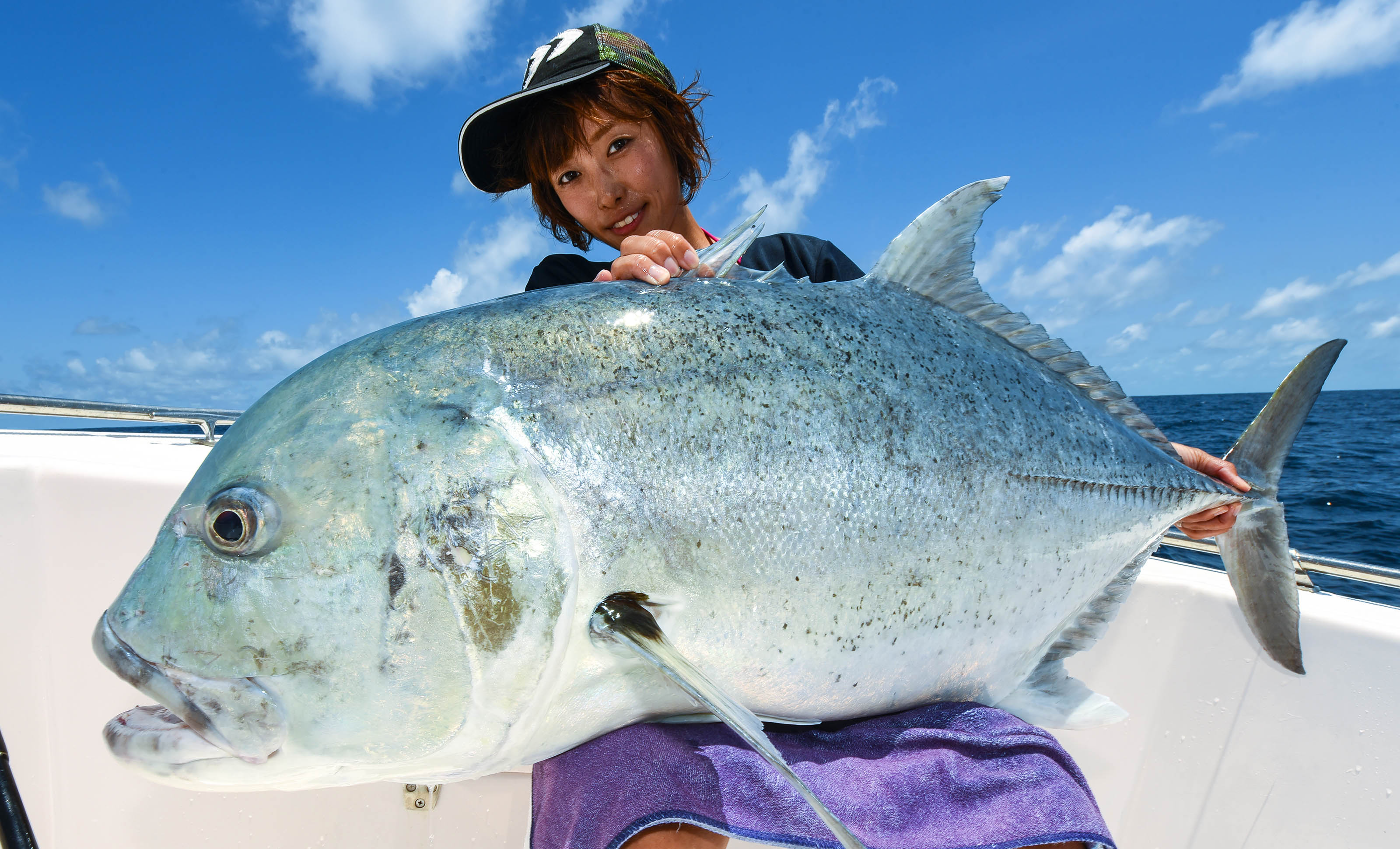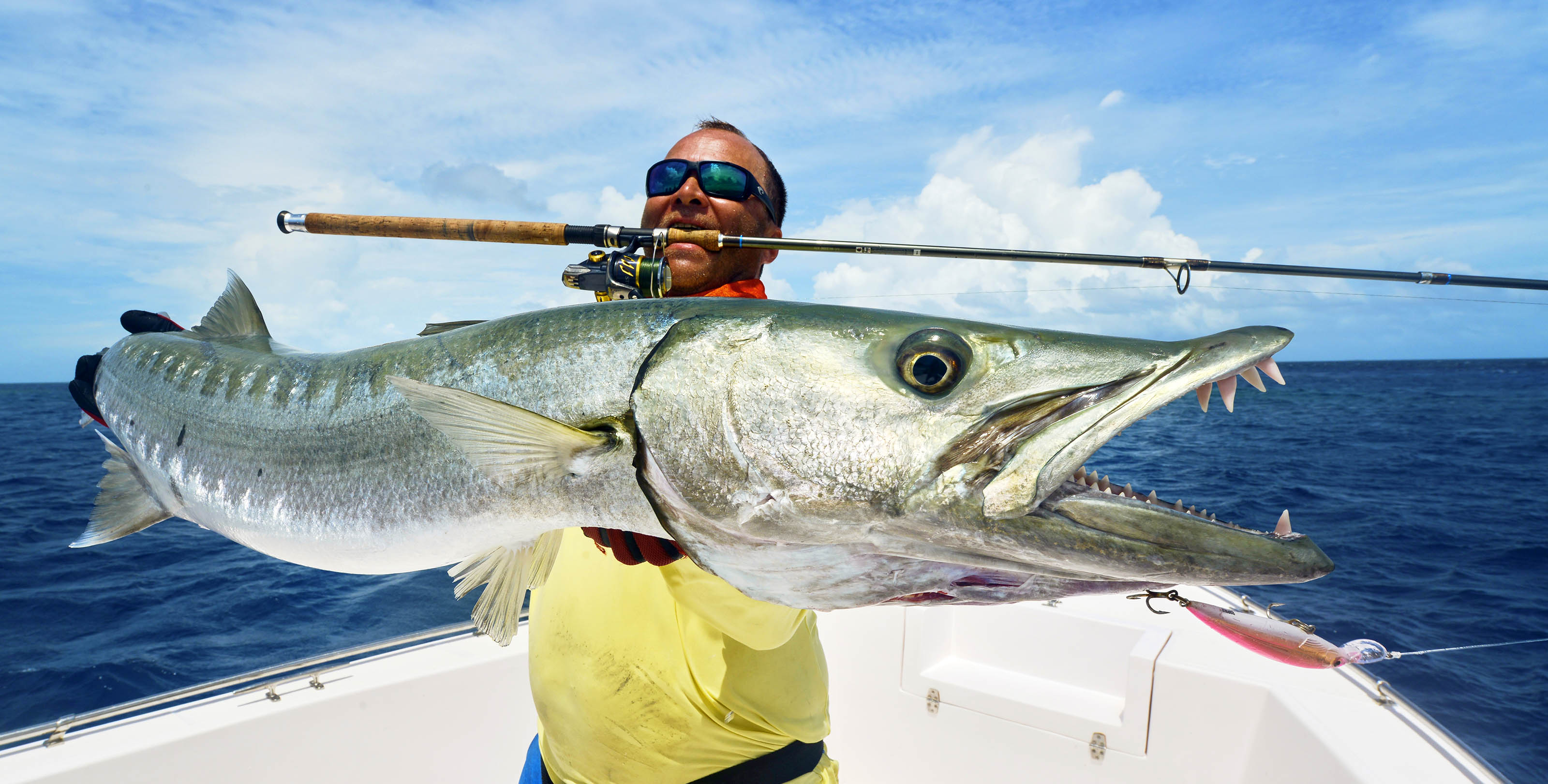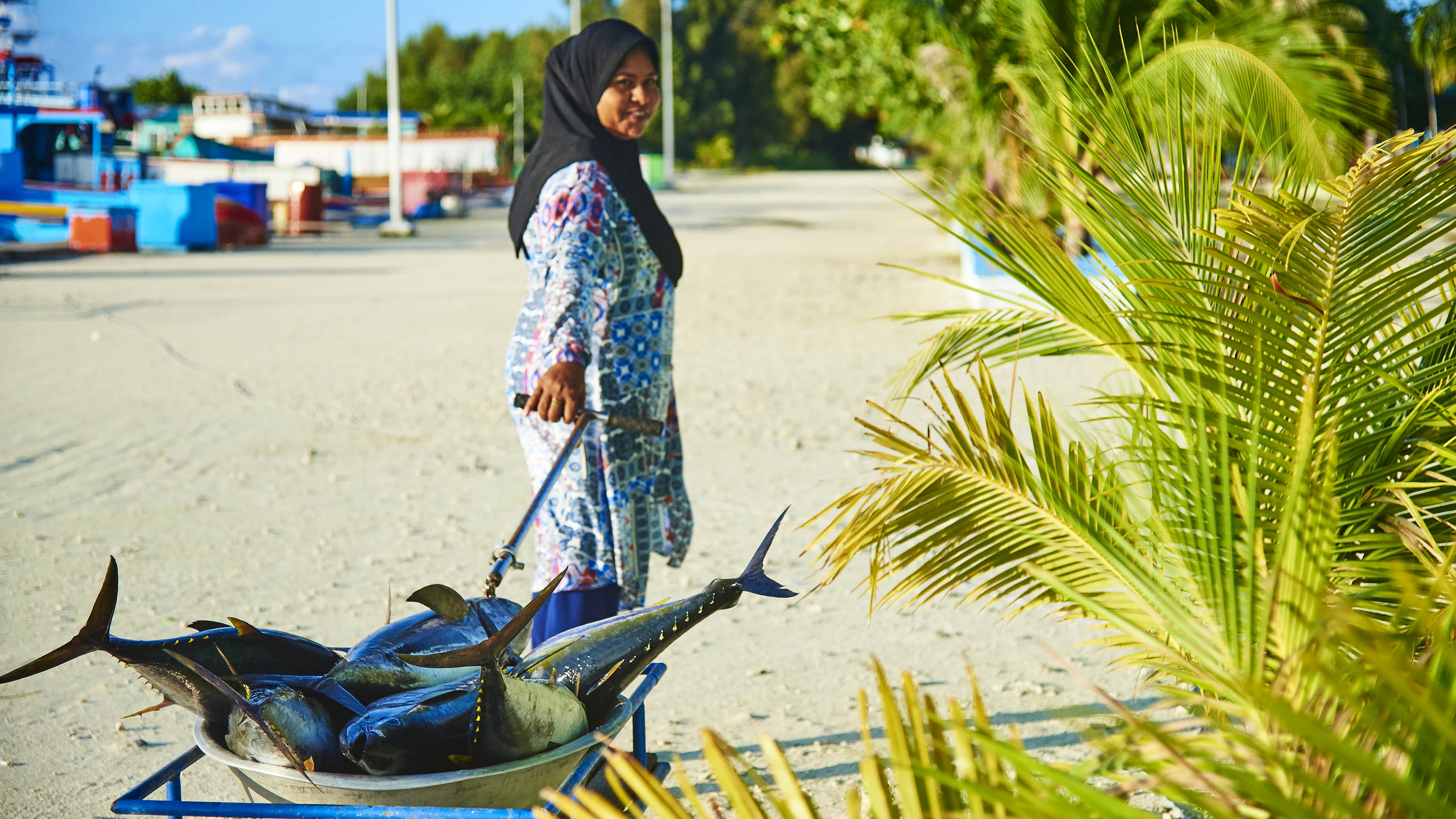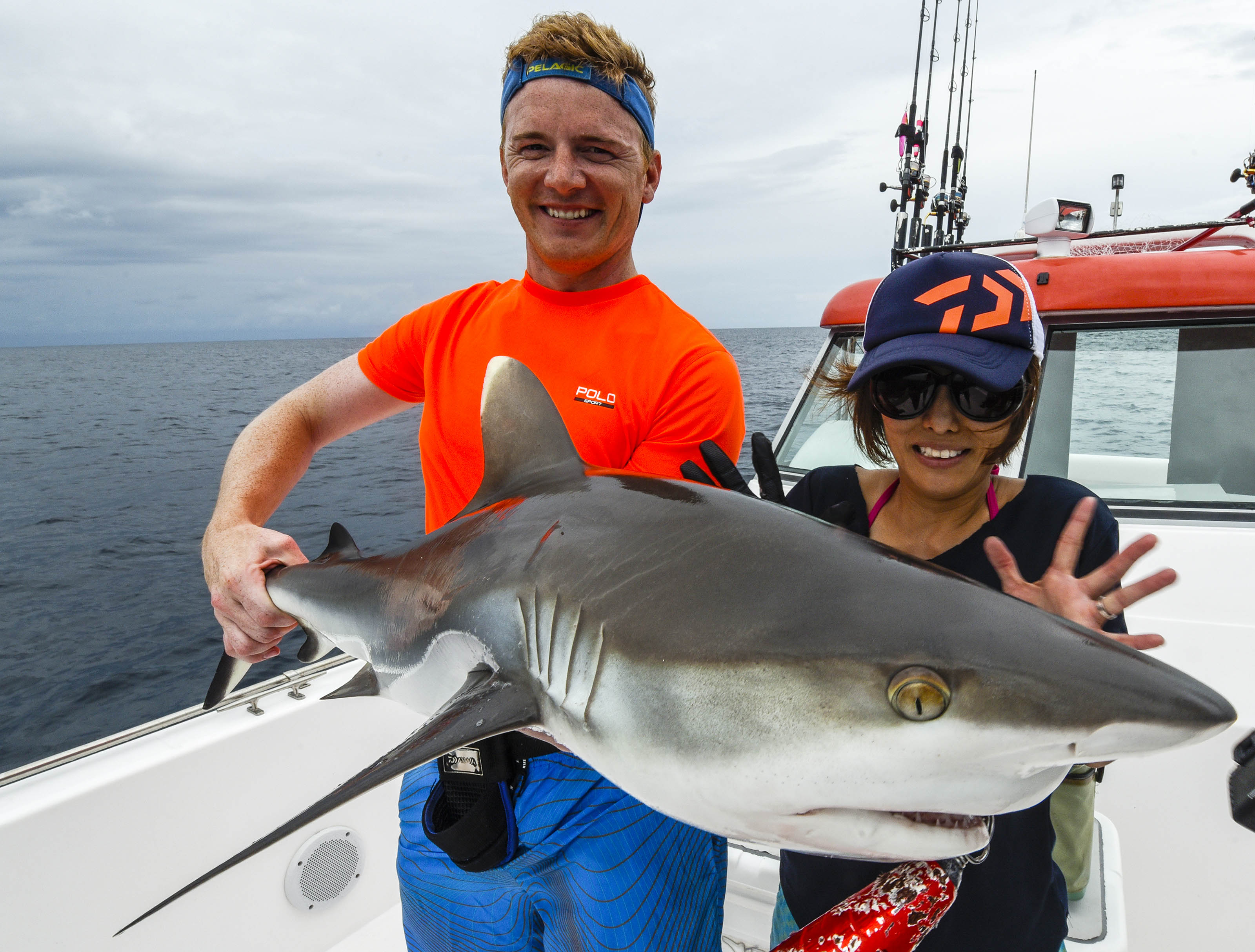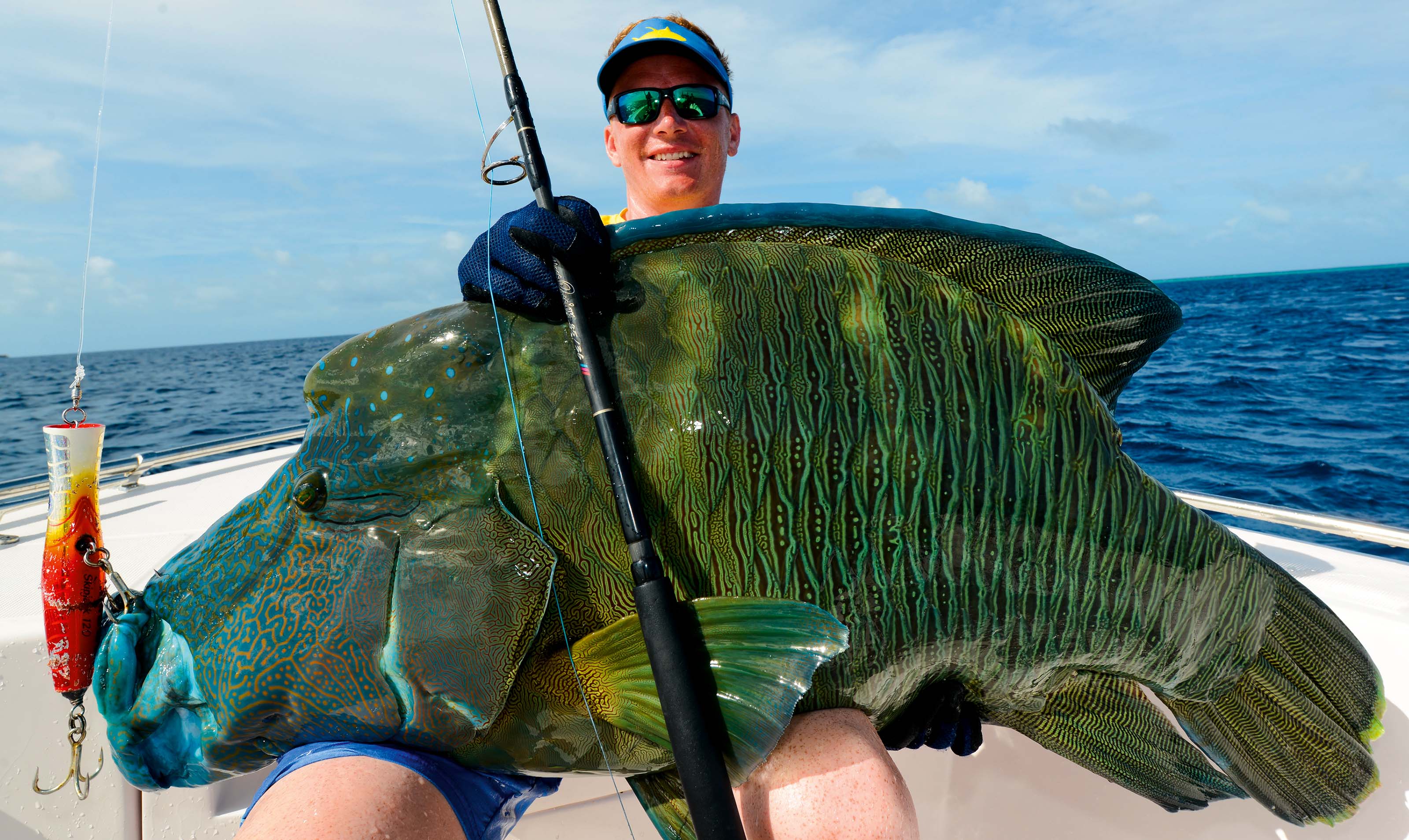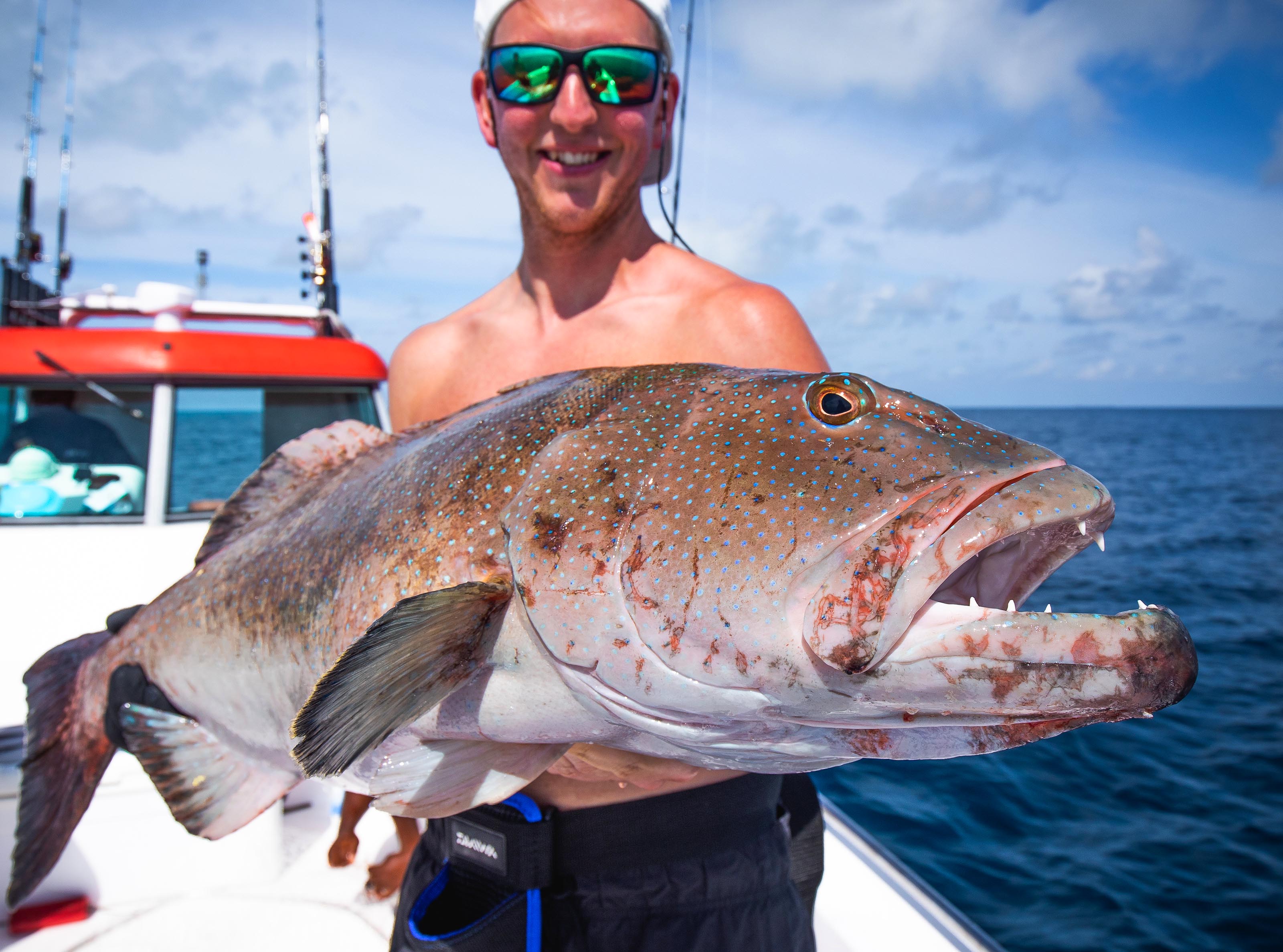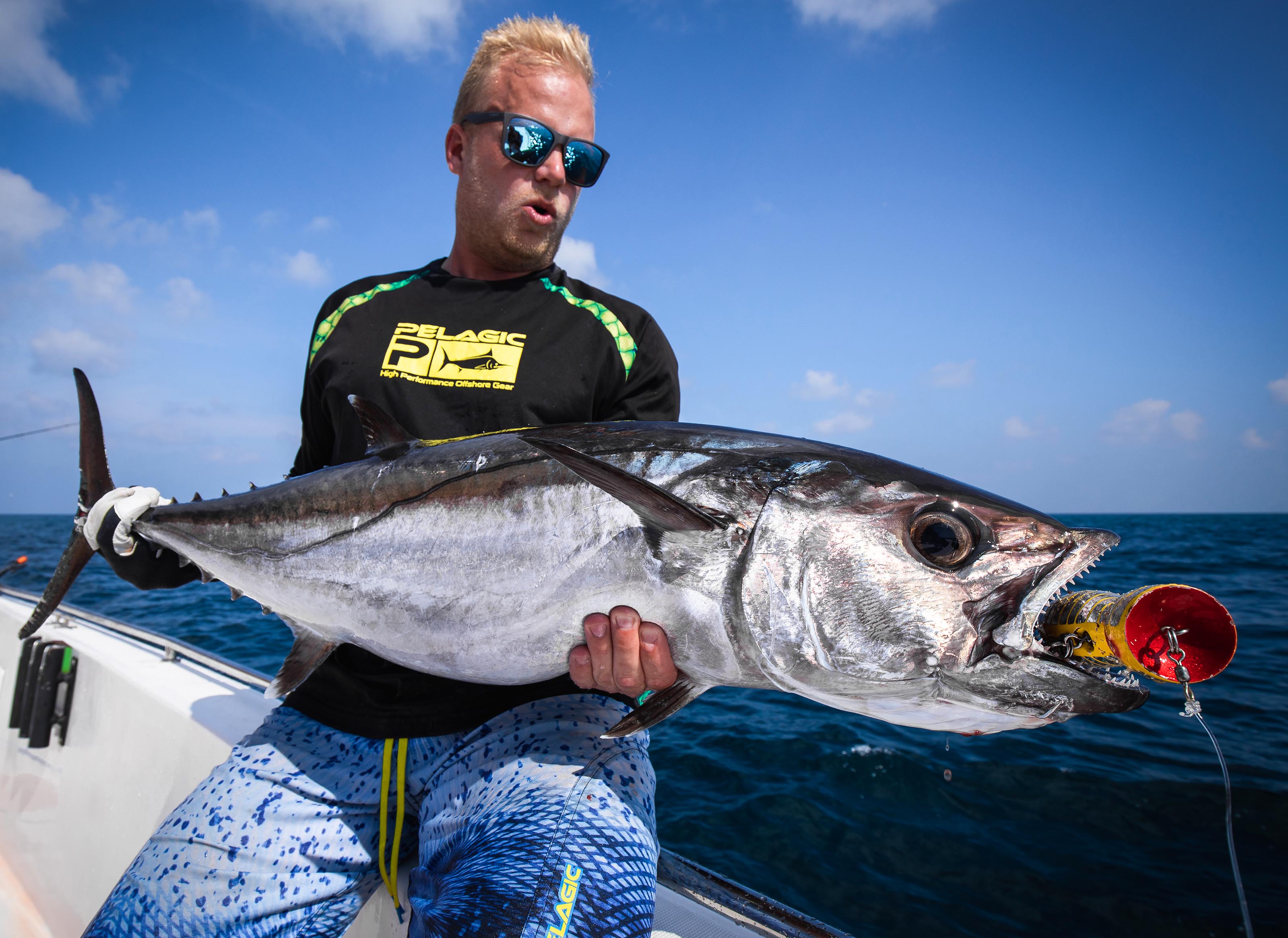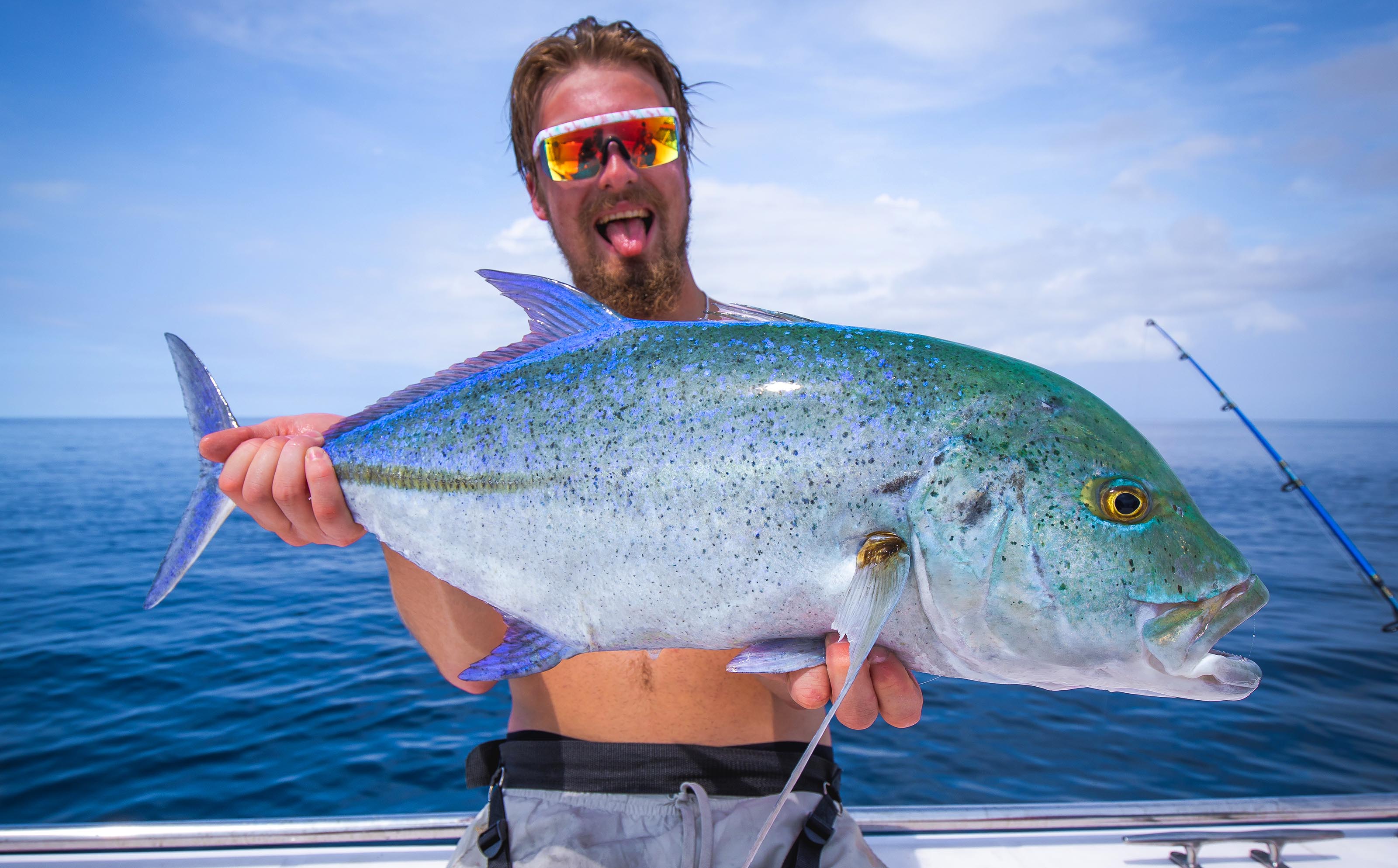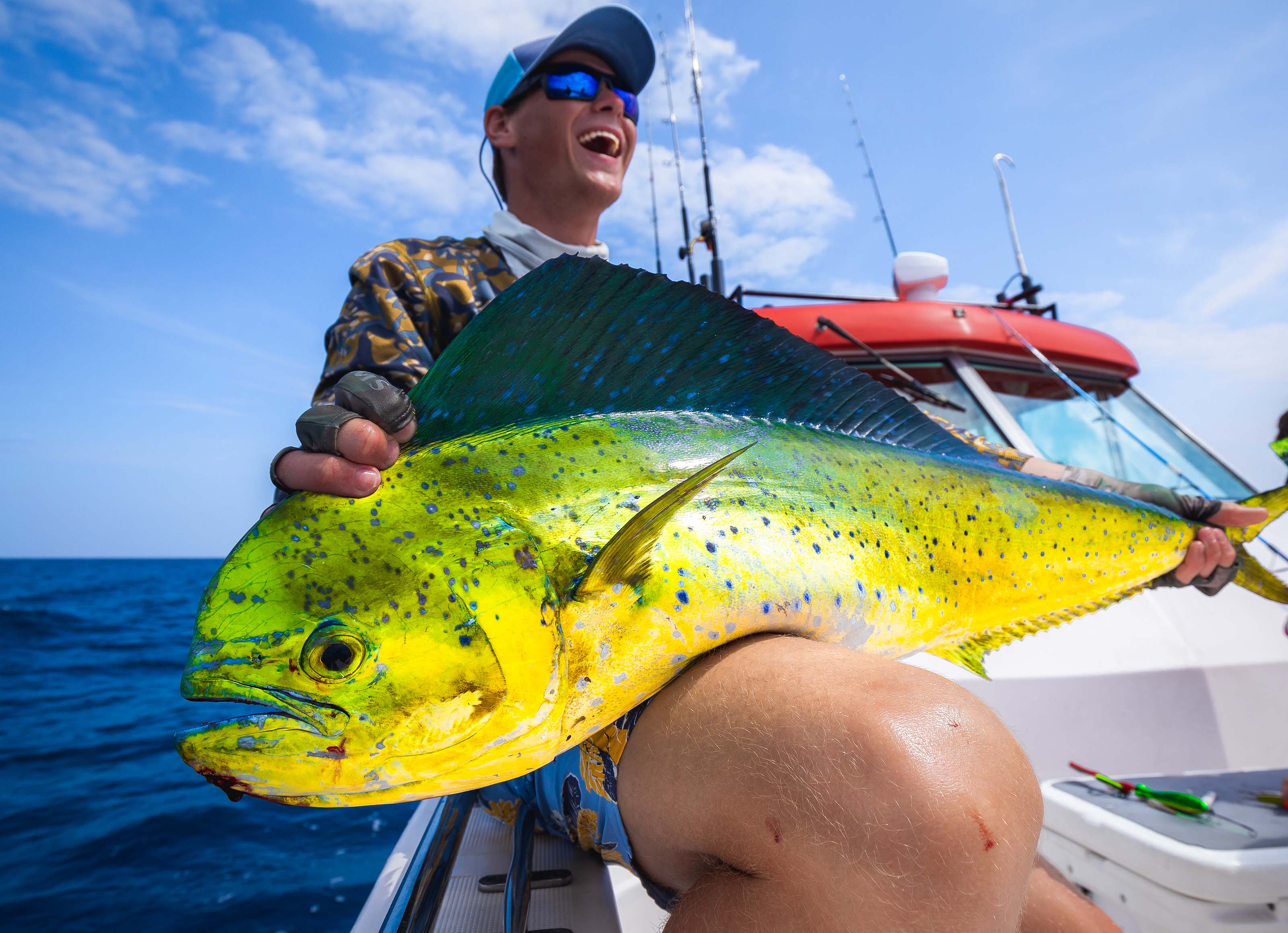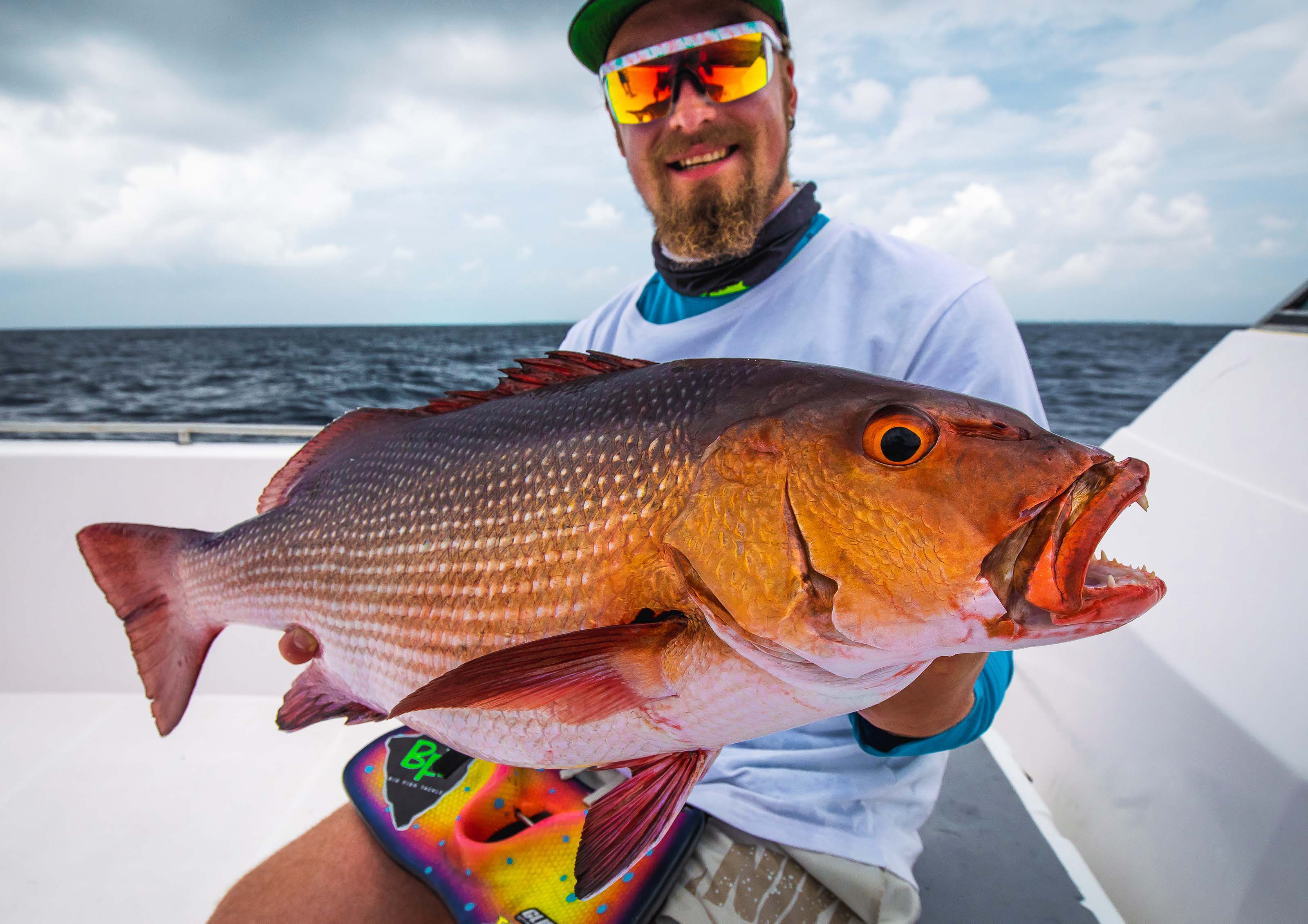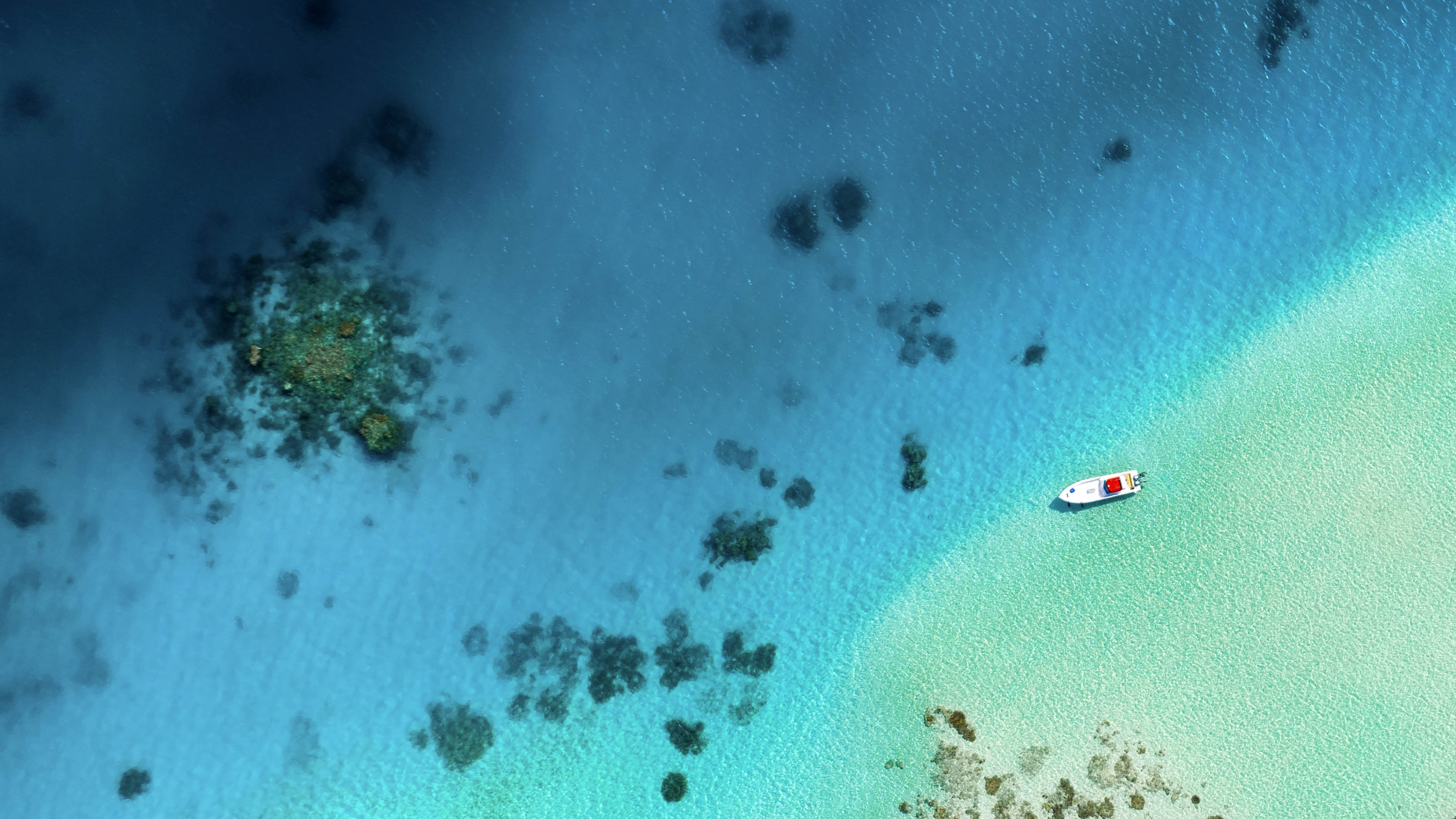GIANT TREVALLY
The Giant Trevally – or just GT amongst friends – is of course the one fish that we target first and foremost. In our opinion nothing else comes even close when it comes to surface fishing in tropical waters. The fierce, explosive takes and the fearless aggressiveness combined with its size and stamina during a fight and the GT is – and always will be, our favorite fish to catch.
While Maldives isn’t necessarily known for record breaking GT-sizes, we have landed many spectacular fish between 40 and 50 KG over the years, and a few of more than 50 KG being caught and released. However, what is really great about this fishery is the number of GTs between 5 and 35 KG.
If you know where to look for them – and we do! – few destinations offer the same consistency GTs, and there is no need to resort to jigging: We can always find them on the surface.

